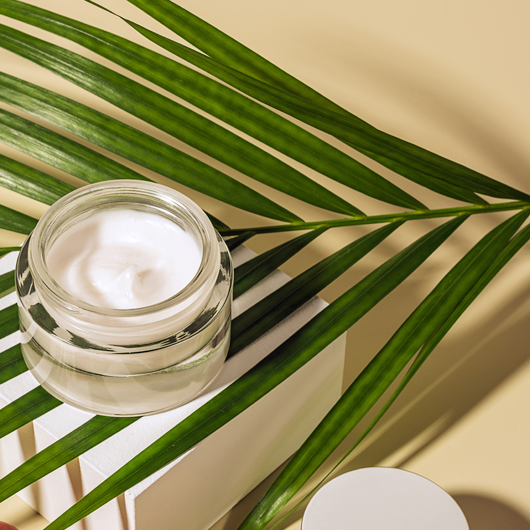DIY Antioxidant Serum

Potent Vitamin C Serum Recipe
- 1 oz Hyaluronic Acid
- 2.8 grams of Magnesium Ascorbyl Phosphate (MAP)
Stir the powder into the Hyaluronic Acid in a Pyrex glass bowl. Once dissolved, pour into an airless bottle using a funnel and lid.
Does your skin need a perk? Bring back a luminous glow with a brightening serum.
Dull skin can appear from dead skin cell build-up or aging. Try our DIY recipe with Magnesium Ascorbyl Phosphate with only two ingredients if your skin looks tired. This serum takes less than 5 minutes to make.
Vitamin C Facial Serum with Hyaluronic Acid and Leucidal Liquid SF Max
- 1 oz Hyaluronic Acid
- 2.8 grams of Magnesium Ascorbyl Phosphate (MAP)
- 4% Leucidal Liquid SF Max
Follow the above instructions. At the end of formulation, add 36 drops of Leucidal Liquid SF Max. Stir until well blended.


Antioxidant Serum with Stem Cells
Video Transcript
- 1 oz Hyaluronic Acid
- 1/2 tsp Phytocell Tec Malus Domestica (Apple Stem Cell)
Today's video will show you how to make a super-simple anti-aging serum with hyaluronic acid and Phytocell Tec Malus Domestica. Phytocell Tec is chocked-full of phospholipids that:
- help your skin retain moisture
- more supple appearance
- stay firm
- more youthful-looking
This clean beauty formula is fragrance-free, paraben-free, silicon-free, phthalate-free, dye-free, glycol-free, and perfect for sensitive skin. This daytime wrinkle minimizer is an excellent addition to any skincare routine.
Place a one-ounce amount of my hyaluronic acid in a sanitized glass bowl. Add 5% of the Phytocell, which is a 1/2 teaspoon. Use a hand blender to mix until well blended, generally about 2 minutes. Pour into an airless bottle.
We always recommend using airless bottles when making serums without preservatives or mild all-natural antimicrobials. This way, contaminants from the air and bacteria from fingers are kept away from your formula. As a result, the longevity of your recipe is extended.

Antioxidant Serums
There are many different antioxidants you can use for this serum.
- Edelweiss Extract - This delicate white flower is a potent extract from Edelweiss, found in the Swiss Alps. It is twice as effective as Vitamin C.
- Regu-Age - Oxidoreductase is a free radical scavenger that targets the under-eye area.
- Antarcticine - This is a hydrating glycoprotein that visibly improves the appearance of the skin.
Why do I need to use antioxidants?
Every day environmental pollutants, smog, and allergens bombard us. The only defense we have for our face is to protect it with a barrier. Antioxidants neutralize the free radicals that bombard our skin. This process helps protect our skin from inflammation and increases the rate at which our complexion ages.
The Top 5 benefits of Using Vitamin C Serums
-
Brightens Complexion: Vitamin C is known for its ability to visibly brighten the complexion. It helps fade pigmentation, reduce redness, and improve overall skin tone, giving the face a more radiant and vibrant appearance.
-
Antioxidant Protection: Vitamin C is a potent antioxidant that combats free radical damage. Free radicals, often resulting from environmental pollutants and UV radiation, can lead to premature aging. By neutralizing these harmful molecules, Vitamin C serums can help protect the skin from oxidative stress.
-
Collagen Production: Collagen is a crucial protein responsible for maintaining the skin's elasticity and firmness. Vitamin C boosts collagen production, which can help reduce the appearance of fine lines and wrinkles, promoting more youthful-looking skin.
-
Reduces Hyperpigmentation: Vitamin C serums can help inhibit the enzyme tyrosinase, which is responsible for converting tyrosine into melanin in the skin. By doing so, these serums can reduce dark spots, age spots, and other forms of hyperpigmentation.
-
Hydration: Some Vitamin C serums are formulated with magnesium ascorbyl phosphate, one of the primary Vitamin C derivatives. This derivative has hydrating effects on the skin, decreasing transepidermal water loss and retaining moisture, leading to softer, more


 Buy with Prime
Buy with Prime





